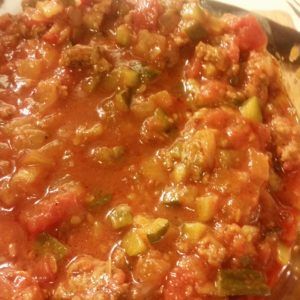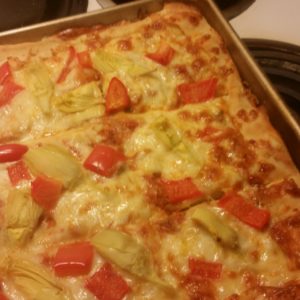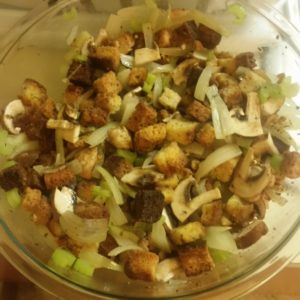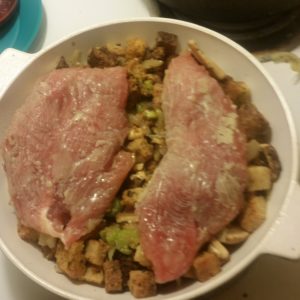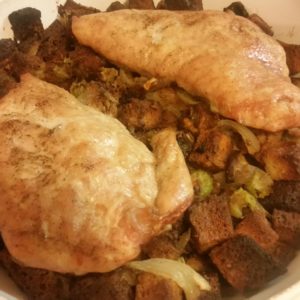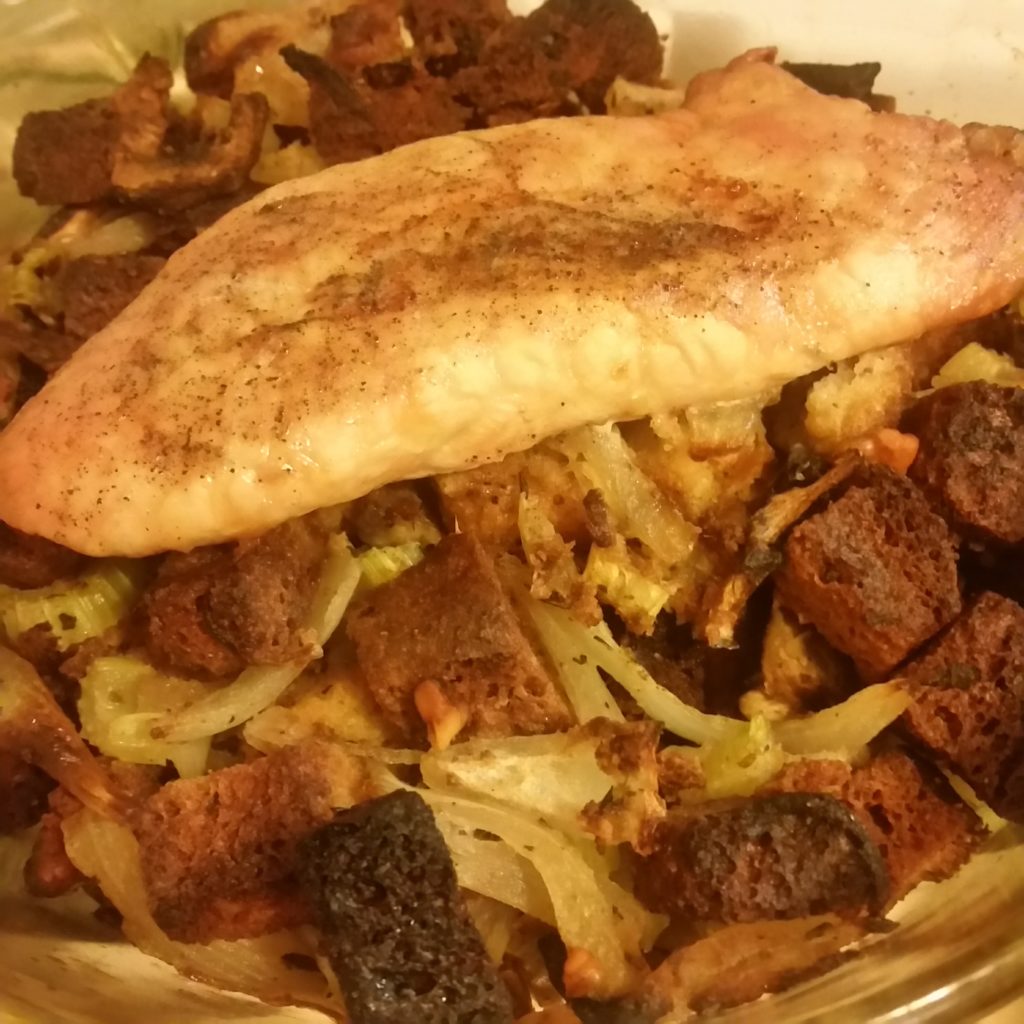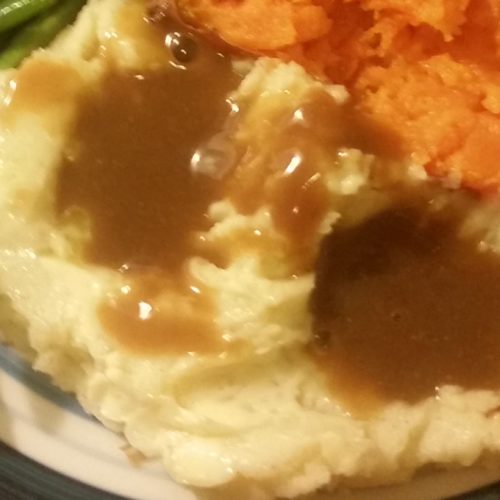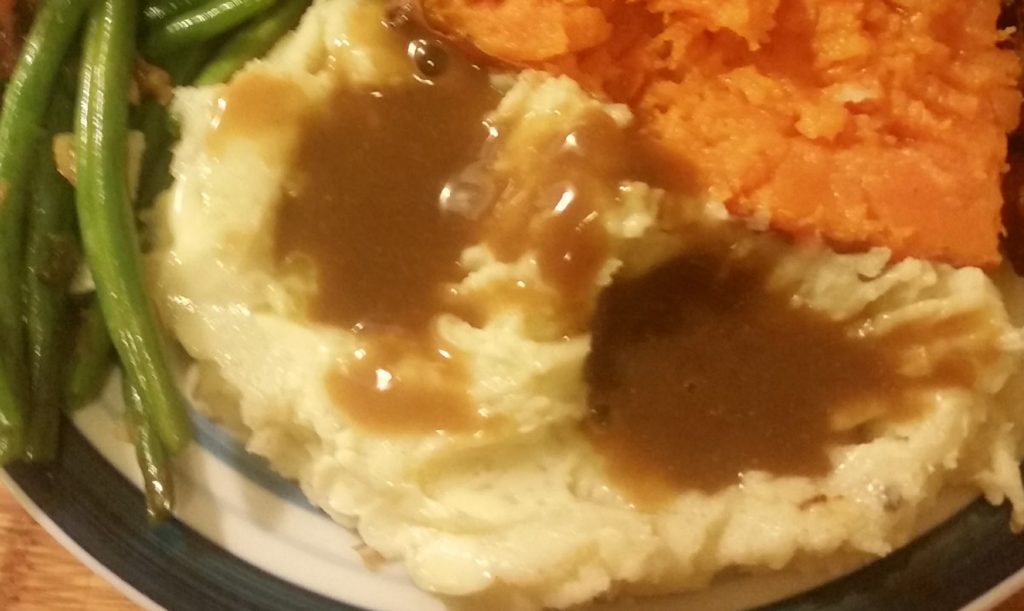
Years ago I had dinner at a friends’ house and they served the most incredible chicken with creamy lemon sauce and rice. To this day, I don’t know what was in that dish, but I’ve made it my life’s work to create something just as tasty. My current incarnation: Lemon chicken with sauteed green beans, lemon drenched vegetables, and broth flavored rice.
This recipe is a dish that I’m constantly evolving and updating. I recently learned a new method of cooking chicken so it will probably update again. But rest assured, if you follow this recipe, you’ll have a tasty meal that you can tweak and change to suit your own preferences:
The chicken is moist and delicious. The vegetables cook while soaked in broth and lemon juice, making the most flavorful onions and carrots you’ll ever eat. The green beans are bright green and still have a fresh tasting crunch to them. Once the chicken is done, you’re left with a reduced broth made of lemon juice, chicken stock, garlic, and juices from the vegetables. Pour this broth generously over your rice and chicken for an added treat.
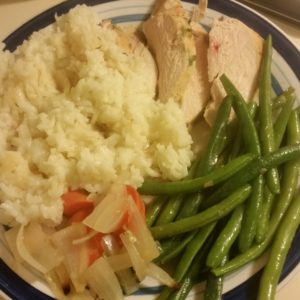
Lemon Chicken and Sides
Ingredients
- 1.5 lbs of chicken breast
- ½ C lemon juice
- 2 large cloves of garlic
- 1 tsp lemon zest
- Salt and pepper
- 2 carrots
- 1 small onion
- 1 cup chicken broth
- Sprigs of fresh thyme
Sauteed Green Beans
- ¾ lb of green beans
- 2 tbsp butter
- Ice
- 1 small shallot sliced
Side of Rice
- 1.5 cups white rice
- 2 small chicken bouillon cubes or 1 large one
Instructions
Chicken and Rice
-
Take a medium sized casserole dish and place your chicken breasts inside. Sprinkle both sides of the chicken with salt, pepper, and lemon zest. Take one of your garlic cloves, peel it, and push it through a garlic press (or chop it very small). Disperse the minced garlic evenly over the chicken. Liberally pour your lemon juice over the top of the chicken. If your chicken breasts are very large, cut them in half so that more surface area is exposed to the marinade and it cooks more evenly. Cover with plastic wrap and place in the fridge to marinate for 2-3 hours.
-
Take your chicken out of the fridge about 10 minutes before cooking time. Preheat your oven to 400 degrees F.
-
Take your rice and put it in a medium-large pot along with 5.25 cups of hot water. Add your two chicken bullion cubes and place over medium heat with the lid mostly covering the top for about 30 minutes. Stir the rice periodically to ensure the bouillon cubes are fully dissolved. When there is very little water remaining in the pot, turn off the heat, and cover the pot with a lid completely.
-
Wash (but don’t peel!) and chop your carrot and onion into medium chunks. Lift up your chicken breasts and cover the bottom of the casserole dish with the vegetables, placing the chicken on top.
-
Take half of your chicken stock, heat it up for a minute in the microwave or on the stove, and pour it into the casserole dish over your vegetables.
-
Bake, uncovered, for 35-40 minutes.
-
Halfway through cooking time, take a heat safe spoon and baste the top of your chicken.
-
Remove the pan from the oven, and carefully remove the chicken breasts from the pan, setting them aside to rest. If you are unsure whether they are cooked through, slice the fattest part of the chicken breast open and check for any pinkness.
-
Take the remainder of your chicken broth, heat it up, and add it to the liquid in the casserole dish. Take a heat-safe spatula and carefully splash the liquid around the edges of the pan where bits of brown concentrated flavor are stuck to the pan. Use the liquid to dissolve the brown bits and mix them into the liquid. Taste it and adjust seasoning as needed.
Sauteed Green Beans
-
This recipe is a variation on the recipe listed in my gluten-free holiday feast for two guide. I recommend starting the green beans once your chicken is in the oven, pre-chopping your garlic and shallots, and then beginning to melt your butter about 10 minutes before your chicken is due to come out of the oven.
-
Top and tail your green beans. Fill a large pot with water and bring it to a boil. Salt the water and add the green beans. Boil for 2 minutes.
-
Fill a large bowl with ice and cold water. Once the green beans are done, drain them, and plop them into the ice water. Make sure they are fully submerged. The green beans can stay in the ice water until it’s time to cook them.
-
In a large frying pan, melt the 2 tbsp of butter. Add your shallot and your other clove of garlic, both chopped small. Caramelize them in the butter for a few minutes.
-
When the green beans are cold all the way through, pull them out of the ice water and place them in the frying pan. Toss them in the butter, shallots, and garlic. Add salt and pepper to taste. The green beans are done when they are heated all the way through.

A Full Meal Ready to Eat
My favorite way to eat this meal is 4-5 large slices of chicken, with the broth poured on top, a good mound of green beans, a small pile of onions and carrots to mix in with the rice and chicken for added flavor, and a large mound of rice, topped with a little butter, spoonfuls of the broth, and some extra lemon juice to make it really sing.
This recipe also makes customization really easy. You can swap out the vegetables for whatever
you like. You can use brown rice instead of white rice if you want something more nutritious.
For brown rice, put 2 ¼ cups water into your pot and bring to a boil. Add the bouillon cubes and stir until fully dissolved. Add 1 cup of brown rice, cover completely, and reduce the heat to bring the water down to a steady simmer. Simmer the rice for 45 minutes, with the lid on at all times. Turn off the heat, leaving the lid on, and let it rest for an additional 15 minutes before serving.

I stick to chicken breast for this recipe because I’m not fond of the taste or texture of dark meat, but chicken thighs will bring in more flavor. If you use chicken thigh instead, add olive oil to the marinade in the beginning. Olive oil doesn’t penetrate chicken breast; therefore, it can’t be absorbed during the marinating process, but a chicken thigh will absorb it just fine.
I hope you enjoy this recipe. If you come up with some great adjustments to it, let me know in the comments below!
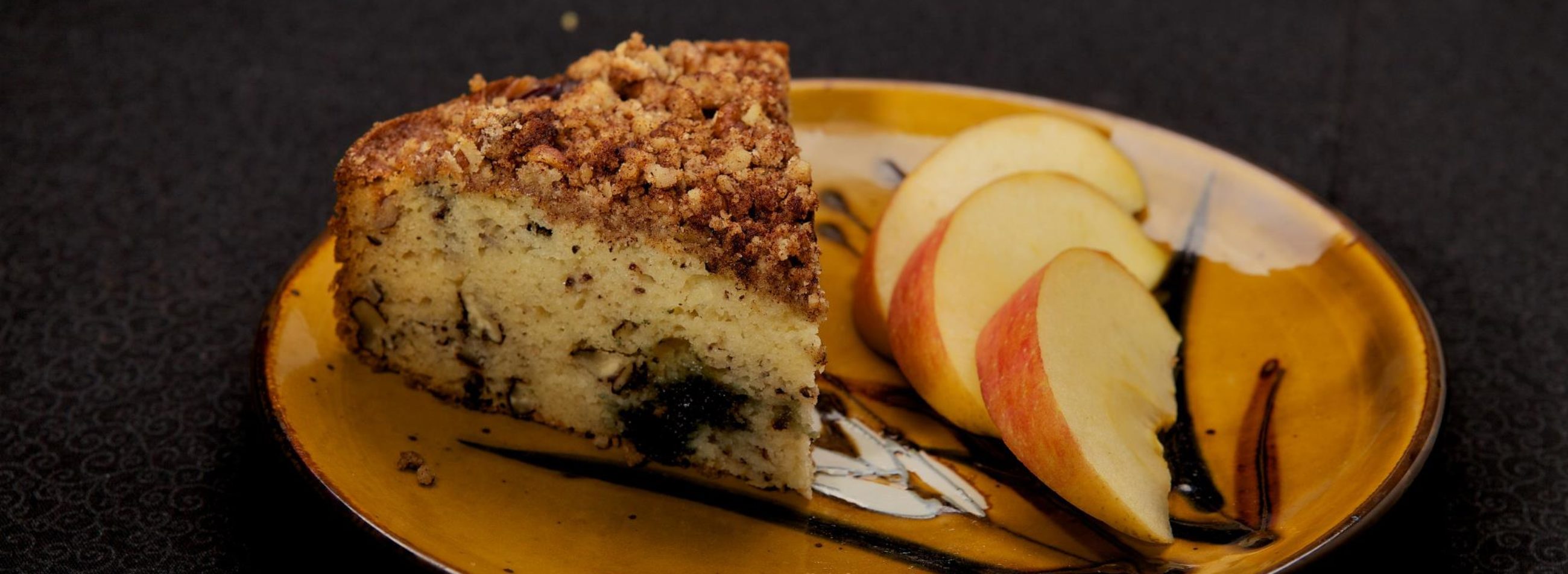




 This ragu style pasta sauce has become one of my go-to recipes. It’s an adaptation of
This ragu style pasta sauce has become one of my go-to recipes. It’s an adaptation of 